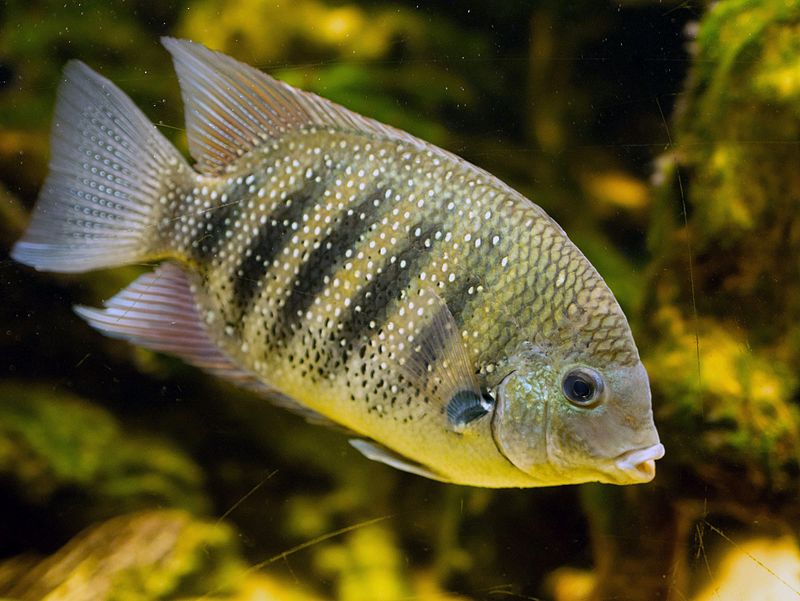LET'S KNOW MORE ABOUT THE STATE BIRD AND FISH OF GOD'S OWN COUNTRY.
STATE BIRD - GREAT HORNBILL
The Great Hornbill (Buceros bicornis) is the State Bird of the Spice Garden of India. It is also known as the Concave-Casqued Hornbill, the Great Indian Hornbill or the Great Pied Hornbill. The Great Hornbill is found in the Indian Subcontinent and Southeast Asia which is one of the larger members of the Hornbill family. It is important to tribal people in many of their cultures and rituals because of its impressive size and colour. This predominantly frugivorous hornbill which is long-lived is also an opportunist that it will prey on small mammals, reptiles and birds. This large bird is 95-130 cm (31-57 in) long with 152 cm (60 in) wingspan and weight of 2 to 4 kg. It is not the longest but the heaviest. Although the orbital skin is pinkish, females are smaller than males and have bluish-white instead of red eyes. Also, they have prominent eyelashes. Its massive bill with bright yellow and black casque on the top is the most attractive feature of the Hornbill. The casque appears concave from the top and U-shaped when viewed from the front with two ridges along the sides that form points in the front. In females, the back of the casque is reddish and in males the underside of the front and back of casque is black. It is believed that the casque is hollow to be the result of sexual selection. The sound produced by the hornbills in flight can be heard from distance because of their heavy wing beats. Over forests, they sometimes fly at greater heights.
The Malabar Grey Hornbill (Ocyceros griseus) is generally found in the canopy of rainforest and wet, tall, evergreen forests of Kerala. It is commonly found in places like Periyar Tiger Reserve, Thattekad etc in Kerala.
STATE FISH - GREEN CHROMIDE

The State Fish of God's Own Country is the Green Chromide which is also known by several other names include Pearlspot cichlid, Banded pearlspot, Striped chromide. In Kerala, it is locally known by the name Karimeen. In Sri Lanka, it is known as Koraliya and Kalundar in Goa. This fish is a species of Cichlid fish family is a native to Sri Lanka and freshwater and brackish water in southern coastal India. Including Singapore, the species have been introduced to various parts of the world. Etroplus suratensis is grey-green in colour with dark barring and dark spot at the base of the fin and its body is short, oval in shape and strongly compressed. With large eyes, mouth small, equal jaws the fish commonly reaches a length of 20 cms and maximum length is twice that. It is an indigenous fish extensively found in the southern coastal parts of India and it dwells its brackish and freshwater habitats. It is found throughout the state of Kerala especially in Backwaters around Alappuzha.

It is also a favourite food item among the food lovers all over the world. The taste of the flesh of Pearlspot is matchless and it makes the fish fairly expensive. Even the production of Karimeen is 2000 tonnes annually in Kerala, it is insufficient to meet the growing demands of the people. The dishes made by Karimeen also tops the list of Kerala cuisines but it is not easily accessible to poor folks because it is very expensive. Among both the people of Kerala and foreign tourists the most favourite pearlspot dish is the hot and spicy 'Karimeen Pollichathu'. These pearlspots are very popular food fishes but their biomass is very low compared to other members of the Cichlid family. After named the official state fish of Kerala in 2010, the following year was declared 'The Year of Karimeen' to create awareness about its commercial potential and to promote production.

Good concept olive
ReplyDelete